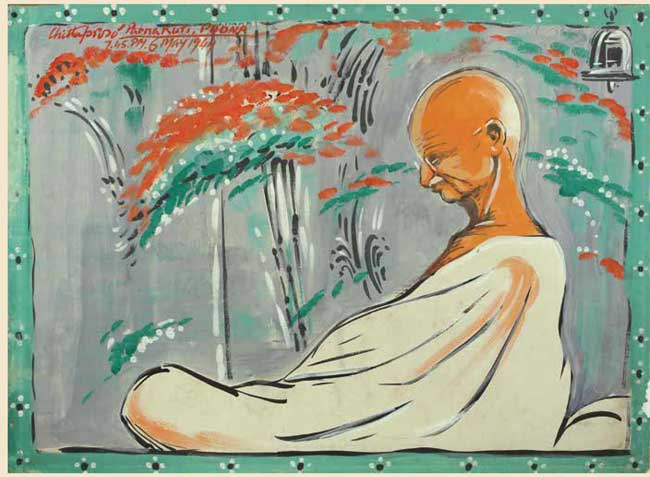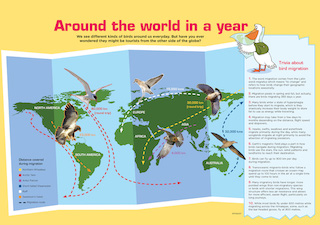Anil Gupta is on the hunt for the developing world’s unsung inventors — indigenous entrepreneurs whose ingenuity, hidden by poverty, could change many people’s lives. He shows how the Honey Bee Network helps them build the connections they need — and gain the recognition they deserve.
Anil Gupta created the Honey Bee Network to support grassroots innovators who are rich in knowledge, but not in resources. […]
This person, whom we met — and you will see it on the website, www.sristi.org — this tribal person, he had a wish. And he said, “If my wish gets fulfilled” — somebody was sick and he had to monitor — “God, please cure him. And if you cure him, I will get my wall painted.” And this is what he got painted. Somebody was talking yesterday about Maslowian hierarchy. There could be nothing more wrong than the Masxlowian model of hierarchy of needs because the poorest people in this country can get enlightenment. Kabir, Rahim, all the great Sufi saints, they were all poor people, and they had a great reason. (Applause) Please do not ever think that only after meeting your physiological needs and other needs can you be thinking about your spiritual needs or your enlightenment. Any person anywhere is capable of rising to that highest point of attainment, only by the resolve that they have in their mind that they must achieve something. […]
In Champaran, we had a Shodh Yatra and we were walking in the land where Gandhiji went to hear about the tragedy, pain of indigo growers. Bhabi Mahato in Purulia and Bankura. Look at what she has done. The whole wall is her canvas. She’s sitting there with a broom. Is she an artisan or an artist? Obviously she’s an artist; she’s a creative person. If we can create markets for these artists, we will not have to employ them for digging earth and breaking stones. They will be paid for what they are good at, not what they’re bad at. (Applause) […]
Source: Anil Gupta: India’s hidden hotbeds of invention | Video on TED.com
URL: https://www.ted.com/talks/anil_gupta_india_s_hidden_hotbeds_of_invention?language=en
Date Visited: 3 October 2021
“Champaran or Champaranya formerly known as Champajhar named after forests of Champa Flowers which are extinct from here is a village in the Raipur District in the state of Chhattisgarh” | Wikipedia | Related posts on Chhattisgarh tribal culture and development >>
SRISTI is a developmental voluntary organization aiming to strengthen the creativity of/at/for grassroots communities, and individual innovators. It supports eco-friendly solutions to local problems being scouted, spawned and spread by the Honey Bee Network for over 33 years. It also nurtures eco-preneurs engaged in conserving biodiversity, common property resources, cultural diversity and educational innovations. […]
Source: About SRISTI – Society for Research and Initiatives for Sustainable Technologies and Institutions
URL: https://www.sristi.org/
Date Visited: 7 November 2021
[Bold typeface added above for emphasis]
The Scheduled Tribes and Other Traditional Forest Dwellers (Forest Rights Act) gives members of tribal communities the right “to collect, use, and dispose of minor forest produce including bamboo, brush wood, stumps, cane, tussar, cocoons, honey, wax, lac, tendu or kendu leaves, medicinal plants and herbs, roots, tubers.” – Azim Premji University Team

Gandhian social movement | Constitution | Adverse inclusion >>
Up-to-date reports by Indian journalists and commentators
To search Indian periodicals, magazines, web portals and other sources safely, click here. To find an Indian PhD thesis on a particular tribal community, region and related issues, click here >>
Search tips
Combine the name of any particular state, language or region with that of any tribal (Adivasi) community.
Add keywords of special interest (music, poetry, dance just as health, sacred grove and biodiversity); learn about the rights of Scheduled Tribes such as the “Forest Rights Act” (FRA); and the United Nations “Declaration on the Rights of Indigenous Peoples”, “Universal Declaration of Human Rights”, “women’s rights”, or “children’s right to education”.
Ask a question that includes “tribal” or “Adivasi”, for instance: “Adivasi way of life better?” (or “tribal way of life worse?”)
Specify any particular issue or news item (biodiversity, bonded labour and human trafficking, climate change, ecology, economic development, ethnobotany, ethnomedicine, global warming, hunter-gatherers in a particular region or state, prevention of rural poverty, water access).
For official figures include “scheduled tribe ST” along with a union state or region: e.g. “Chhattisgarh ST community”, “Himalayan tribe”, “Scheduled tribe Tamil Nadu census”, “ST Kerala census”, “Particularly Vulnerable Tribal Group Jharkhand”, “PVTG Rajasthan”, “Adivasi ST Kerala”, “Adibasi ST West Bengal” etc.
In case the Google Custom Search window is not displayed here try the following: (1) toggle between “Reader” and regular viewing; (2) in your browser’s Security settings select “Enable JavaScript” | More tips >>
Note: hyperlinks and quotes are meant for fact-checking and information purposes only | Disclaimer >>
For additional learning resources visit the website of the Centre for Science and Environment (CSE), “a public interest research and advocacy organisation based in New Delhi”:
Communication for Awareness
CSE’s publications and informational products have been its strength and they have always combined research and readability to get the message across.

CSE’s tools for awareness raising are periodicals, publications, films/short spots, briefing papers, exhibitions, posters and other products. CSE’s informational products reach people in more diverse ways such as features service, website and e-news bulletins. […]
Source: About CSE
URL: https://www.cseindia.org
Date Visited: 10 July 2022
